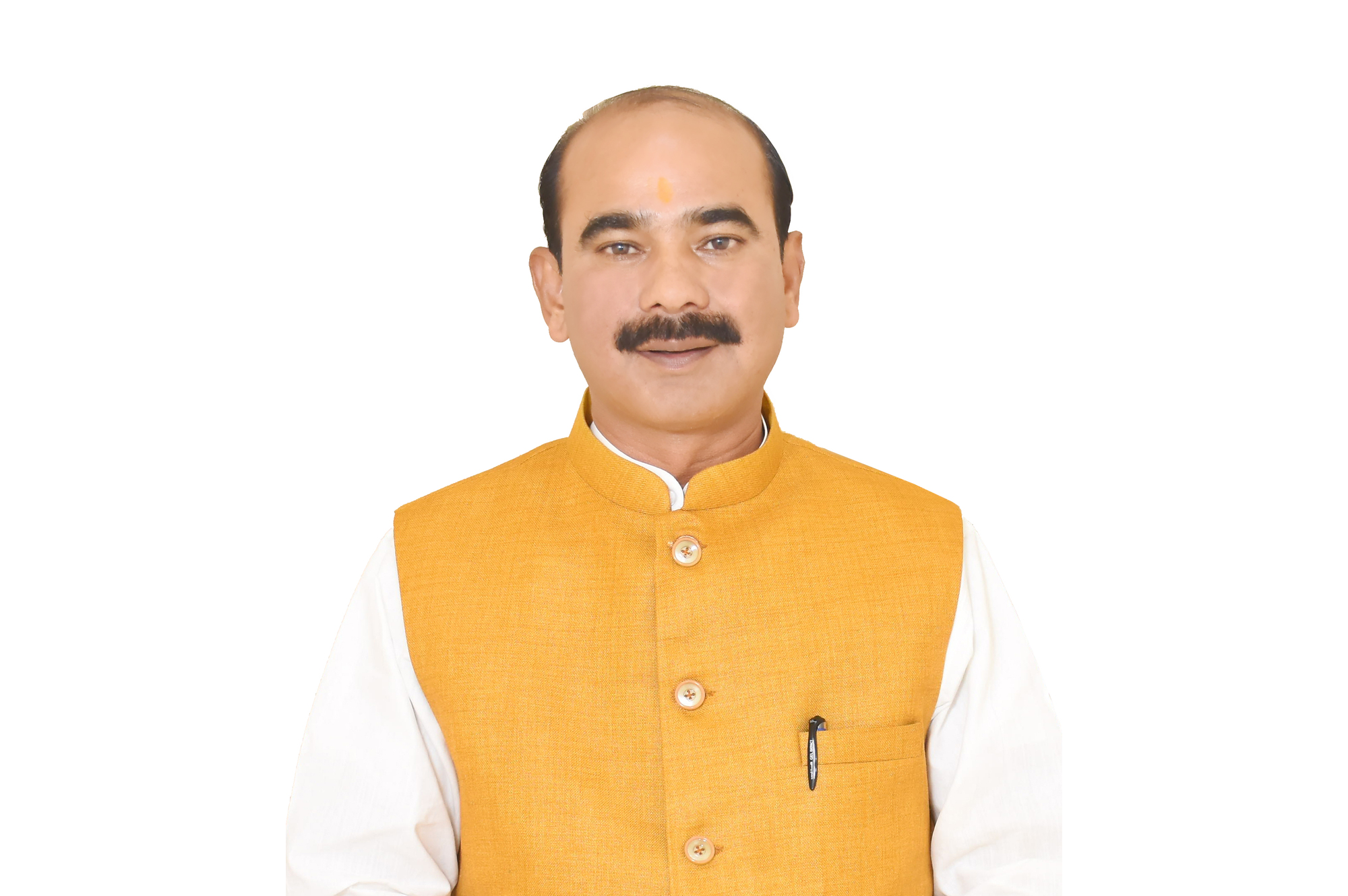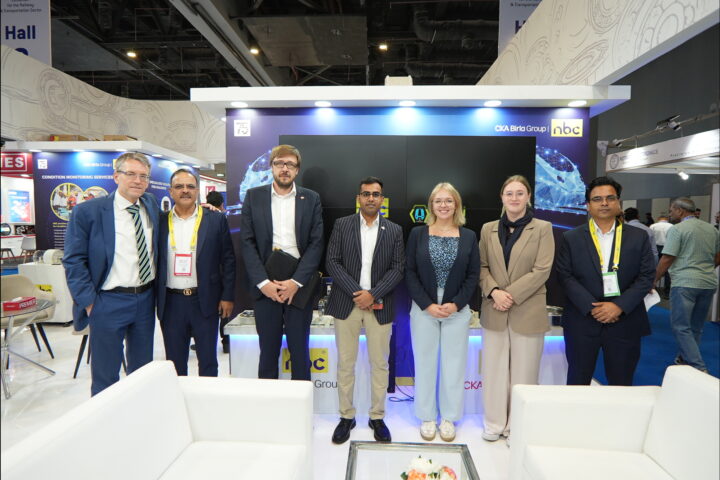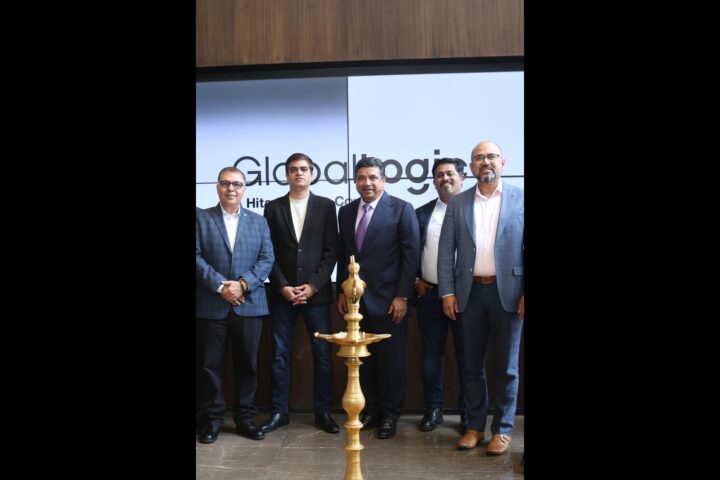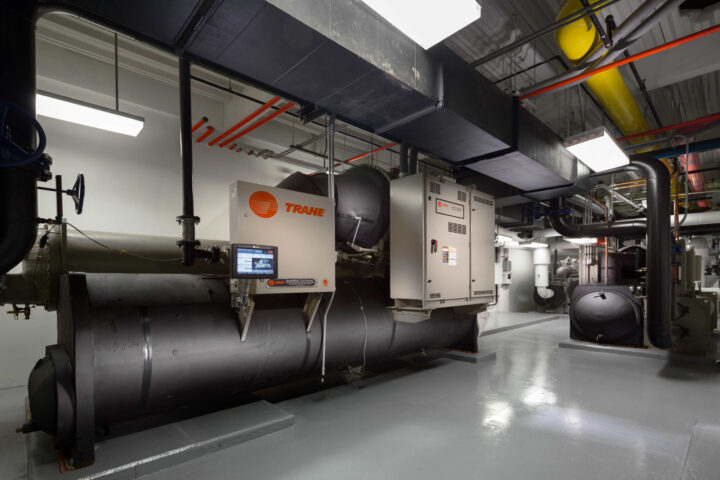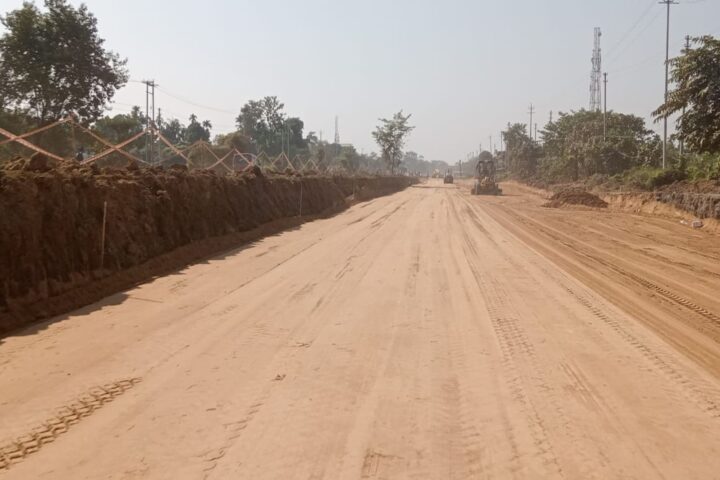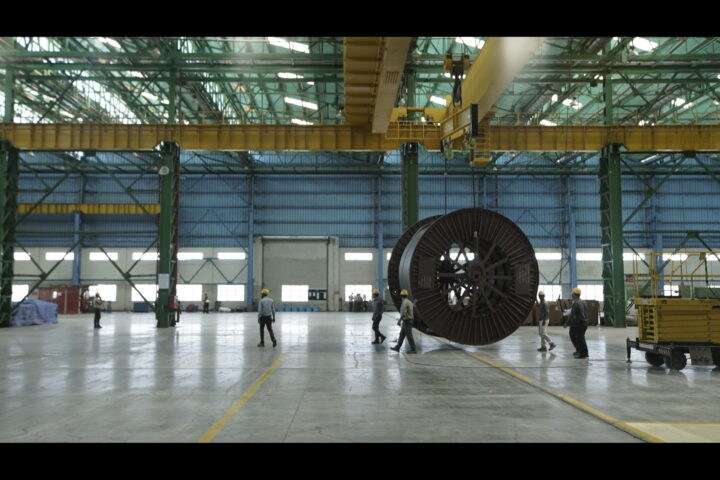Steering Growth, Sustainability, and Inclusivity
In an exclusive interview with EPC World, Shri AJAY TAMTA, Minister of State for Road Transport & Highways, Government of India, outlines the Ministry’s ambitious roadmap for transforming India’s highways and road infrastructure. From accelerating expressway development under Vision 2047 to integrating intelligent transport systems, enhancing road safety, and promoting sustainable construction practices, Shri Tamta highlights how the government is paving the way toward a more connected, greener, and inclusive future. He also delves into the crucial role of Public-Private Partnerships, the development of electric mobility infrastructure, and the transformative impact of improved connectivity on remote and underserved regions—aligning with the vision of Atmanirbhar Bharat.
Can you please share your vision for the road transport and highways sector in India over the next 5-10 years?
Our vision for India’s road transport and highways sector, under the dynamic leadership of Hon’ble Nitin Gadkari Ji, is guided by four core principles: safety, efficiency, sustainability, and inclusivity. We are committed to making roads safer, reducing congestion, enhancing ride comfort, and ensuring last-mile connectivity. A key aspect of this vision is to provide seamless connectivity for all sections of society, efficiently linking even the remotest parts of India to major cities.
Our overarching goal is aligned with India’s Vision 2047, which is based on four pillars: efficient logistics, including reduction in logistics costs; sustainable transport, where reduction in net CO₂ emissions from the road transportation sector is emphasized; safer movement, which involves reduction in road accidents and fatalities; and increased user convenience, where we envision a world-class, future-ready transportation infrastructure. This also includes integrating advanced technologies, promoting electric mobility, and enhancing public transportation through intelligent transport systems. We also aim to build more resilient roadways that can adapt to increasing traffic demands while maintaining a minimal environmental footprint.
With India’s growing focus on Expressways and National Highways, could you highlight key projects in the pipeline and their expected impact on the economy and connectivity?
In the last five years, a corridor-based approach to highway development has been adopted, focusing on consistent standards, user-centric innovation, and enhanced logistics efficiency. The impact of this approach is two-fold.
First, it delivers an immediate economic boost by improving inter-regional connectivity and enabling faster, more efficient movement of people and goods. Second, it helps decongest existing roads and highways, leading to reduced travel time, lower fuel consumption, and improved environmental sustainability—contributing significantly to a greener and more prosperous future for India.
Access-controlled expressways and highways connecting key economic hubs and major trade corridors play a central role as part of the Vision 2047 Master Plan for National Highways. 50,000 Km of such High-speed corridors (HSCs) are required for Viksit Bharat to connect vital centres of economy and achieve regional equity of which 11,000 Km of HSCs are already existing/under development. These HSCs are expected to significantly reduce logistics costs and enhance transportation efficiency. Some of these impactful projects currently under construction include the Delhi-Mumbai Expressway, Delhi-Dehradun Expressway, Solapur-Kurnool-Chennai corridor, Bangalore-Chennai Expressway, Indore-Hyderabad corridor, and the Raipur-Vishakhapatnam corridor. The Delhi-Mumbai Expressway, for instance, is set to dramatically cut travel time and boost cargo movement, providing a substantial uplift to both regional and national economies. Similarly, the Delhi-Dehradun Expressway will enhance connectivity to the capital region, reducing travel dependency on air transport for that route
What steps are being taken to improve the quality and maintenance of existing highways, and how is technology being used to support this?
Improving the quality and maintenance of existing roads is crucial to ensure their longevity, safety, and smooth operation. The Government has prioritized the upkeep of the National Highway (NH) network through a comprehensive approach that includes preventive maintenance strategies, regular inspections, and real-time condition monitoring. To support these efforts, advanced technologies such as Geographic Information Systems (GIS) and Artificial Intelligence (AI) are being used to assess road conditions and identify maintenance needs efficiently. These tools enable timely interventions, reducing the risk of long-term deterioration.
Maintenance and repair of NHs are managed through well-established contractual frameworks like Build-Operate-Transfer (BOT) and Toll-Operate-Transfer (TOT) models. In these systems, private concessionaires are responsible for maintaining designated stretches of highways during a concession period, during which they collect tolls to recoup their investments. After this period, the roads are returned to the government. In case of EPC contracts, it is the responsibility of private concessionaires to maintain national highways till expiry of Defect Liability Period (DLP). For NH segments, where the DLP has expired or are not covered under any concession model, the Ministry has adopted Performance-Based Maintenance Contracts (PBMC) and Short-Term Maintenance Contracts (STMC) to ensure continuous and systematic upkeep.
Each of these models defines specific maintenance and concession periods, with contractors held accountable for timely defect rectification. Regular field inspections are conducted, and non-compliance is penalized. Independent engineers are mandated to inspect highway stretches at least once a month, documenting any deficiencies in detailed reports to ensure quality control.
Furthermore, Network Survey Vehicles (NSVs) are used at regular intervals to assess road conditions across the NH network. The data collected is uploaded to NHAI’s AI-based platform, Data Lake, where it is analysed by the Road Asset Management System (RAMS) Cell. This analysis helps prioritize maintenance activities based on road roughness, surface distress, and traffic conditions, allowing the development of data-driven, optimized maintenance strategies.
In addition to the above measures, to enhance durability and resilience of roads, Ministry promotes innovative engineering practices. These include subgrade stabilization, geosynthetics, high-performance bituminous mixes, and the deployment of automated, machine-aided construction techniques. These approaches significantly reduce the frequency and cost of future repairs while improving the overall lifespan of roads.
Given the concern over road accidents, what new measures is the Ministry implementing to improve road safety and how is it collaborating with state and local authorities to strengthen enforcement and compliance?
To reduce road accidents, the Ministry has adopted a multi-layered strategy based on the 4Es of road safety: Education, Enforcement, Engineering, and Emergency Care.
Under the Education pillar, a Central Sector Scheme has been launched to establish model Driving Training Institutions. These include three types: Institutes of Driving Training and Research (IDTR), Regional Driving Training Centres (RDTC), and Driving Training Centres (DTC). One IDTR is planned per 2.5 crore population with a training capacity of 22,000 people per year. One RDTC is planned per 1 crore population, training 11,000 people annually. One DTC is planned per 10 lakh population in rural and underdeveloped areas, with a capacity of 6,700 per year. These centres aim to provide quality theoretical and practical training. The Ministry is also introducing a skill-based licensing process to ensure only well-trained drivers are on the road. So far, 88 institutes/centers have been approved.
To spread awareness, the Ministry conducts large-scale campaigns on platforms like Twitter, Facebook, Instagram, Koo, and YouTube. Celebrity-led awareness videos have been launched, including advertisements featuring actor Akshay Kumar, to promote safe driving behavior.
As part of stricter Enforcement, Ministry issued notification G.S.R. 575(E) dated 11th August 2021 for electronic monitoring and enforcement of road safety. These rules specify the detailed provisions for placement of electronic enforcement devices (speed camera, CCTV, speed gun, body wearable camera, Automatic Number Plate Recognition camera, weigh in machine and any such technology. Enforcement efforts are thus being boosted with the help of technology and collaboration with state and local governments. This includes strict monitoring and penalties for violations such as over-speeding, not wearing helmets (especially by children), and failure to follow two-wheeler safety rules in school and high-risk zones.
The Motor Vehicles (Amendment) Act, 2019 supports these efforts by increasing penalties for traffic violations, enhancing punishment for juvenile driving, and mandating electronic monitoring. It also encourages automation of driving tests and vehicle fitness checks.
In terms of Engineering, the Ministry has made Road Safety Audits mandatory at all project stages. Road Safety Officers have been appointed at regional offices to handle audits, black spot corrections, and other safety measures. High priority is accorded by Ministry to identification and rectification of accident spots on NHs. Thus, it introduced eDAR (formerly known as iRAD), a digital platform that collects, manages, and analyses road accident data. It is available on both mobile and web platforms and works with key departments such as Police, Transport, Highways, and Health to improve road safety. A key focus is identifying and fixing black spots—accident-prone areas—on National Highways through long-term engineering solutions. The platform provides instant information on road accidents and helps accelerate accident compensation claims, bringing relief to victims’ families.
For vehicle safety, features such as airbags, seat belts, ABS, speed limiters and fire detection alarm has been made mandatory for specified categories. The Ministry has also introduced the Bharat New Car Assessment Program (BNCAP), which encourages vehicle manufacturers to follow higher safety standards. In fact, India received the ‘Prince Michael Decade of Action Road Safety Award for the BNCAP program. As two-wheelers are the major victim of road accidents, Ministry has prescribed norms for use of helmets, safety harnesses, and a speed limit of 40 km/h when children below 4 years of are being carried on a two-wheeler.
For Emergency Care, the government has ensured ambulance services along highways, launched a Good Samaritan policy to protect helpers, and started a cashless treatment scheme for road accident victims. Cashless treatment scheme for accident victims were introduced on pilot basis in 6 States.
Given the potential of smart roads and intelligent transport systems (ITS), what steps is the Ministry taking to integrate these technologies into India’s road network?
The Ministry of Road Transport and Highways (MoRTH) is actively working towards transforming India’s road infrastructure through the integration of smart technologies and Intelligent Transport Systems (ITS). These initiatives aim to make road travel safer, faster, more efficient, and commuter-friendly. It introduced the scheme for strengthening of ITS in Public Transport, wherein MoRTH supports State Road Transport Undertakings (SRTUs) in adopting advanced ICT and ITS technologies for buses. The projects implemented as part of this scheme includes rolling out electronic ticketing systems for centralized fare collection, passenger/bus tracking systems, and intelligent fleet management solutions as part of overall ITS framework. These measures are designed to provide commuters with a more reliable and transparent experience by enabling real-time bus tracking, digital payments, and route optimization.
Collectively, these efforts are geared towards building a world-class, tech-enabled, safe, and future-ready road network that supports India’s growing mobility needs while reducing congestion, travel time, and environmental impact.
As electric vehicles (EVs) gain popularity, what is the Ministry doing to develop the necessary infrastructure, particularly for highways and charging stations, to support their widespread adoption?
The Ministry is committed to wholeheartedly supporting the shift towards electric mobility by establishing a strong ecosystem for electric vehicles and infrastructure development being a key enabler. One major step in this direction is the notification by the Government of India on 29th September 2024 of the PM Electric Drive Revolution in Innovation Vehicle Enhancement (PM E-Drive) scheme with an outlay of ₹10,900 crore. This plan seeks to encourage the uptake of EVs by providing direct incentives in the form of lower upfront costs, thus making electric vehicles more affordable to the public.
Further, the Ministry has exempted battery-operated transport vehicles from the need for both normal permits and the All-India Tourist Permit, without any cost. These policy interventions are aimed at lowering barriers and speeding up EV deployment throughout the country.
In order to ensure that electric vehicles will be able to go long distances without range anxiety, the Ministry is actively building a country-wide network of EV charging stations strategically located along highways, expressways, truck stops, and busy urban centers. This vast rollout of infrastructure is being undertaken in close coordination with government agencies and private sector stakeholders.
Infrastructure projects often require massive investments. What is your view on Public-Private Partnerships (PPP) for road development? How does the road transport sector align with the National Infrastructure Pipeline (NIP), and what funding allocations are planned for road projects in the coming years?
Public-Private Partnerships (PPP) have emerged as a vital tool for accelerating infrastructure development in India, particularly in the road sector. By leveraging the financial capacity, innovation, and operational efficiency of private players, PPP models ensure timely, high-quality project execution and long-term asset sustainability. Various models such as Build-Operate-Transfer (BOT), Hybrid Annuity Model (HAM), and Toll-Operate-Transfer (TOT) have already shown success in highway construction and maintenance. These frameworks enable effective risk-sharing and investment collaboration between the government and private stakeholders whereby private and institutional investors invests in revenue-generating infrastructure assets, freeing up public capital for new projects.
The Government is also using the Design-Build-Finance-Operate-Transfer (DBFOT) model in emerging sectors like ropeways, where project viability depends on geographical terrain, passenger demand, and operational costs. In such cases, flexibility in project structuring is crucial. Projects are supported through Viability Gap Funding (VGF) or capital contribution in form of land and utility shifting, especially where the upfront financial returns are limited but the long-term socioeconomic benefits are substantial.
The road transport sector plays a pivotal role in the Government of India’s National Infrastructure Pipeline (NIP), a landmark initiative that seeks to invest over ₹111 lakh crore (USD 1.4 trillion) in infrastructure between FY 2020 and FY 2025. Nearly 19% of this allocation is designated for the road sector, underlining its critical role in boosting connectivity, trade, and overall economic performance. Under this initiative, a range of infrastructure projects are being undertaken—from economic corridors and expressways to border roads—many of which are being executed through various PPP frameworks.
In addition, the Ministry of Road Transport and Highways (MoRTH) is developing Multimodal Logistics Parks (MMLPs) and Intermodal Stations (IMS) to improve freight movement and passenger convenience. Projects like IMSs in Katra and Tirupati are examples of infrastructure convergence, integrating intercity and intra-city public transport—such as rail, metro, ropeways, and bus systems—with physical infrastructure like skywalks, subways, and terminals to facilitate seamless mobility.
With increasing urbanization, evolving mobility demands, and India’s goal of becoming a USD 5 trillion economy, the government’s strong infrastructure thrust through PPPs and the NIP ensures that the country’s road network evolves to meet future demands. Together, these initiatives aim to create a more integrated, efficient, resilient, and sustainable transportation ecosystem across the country.
What role do road transport and highways play in the government’s vision of “Atma Nirbhar Bharat” mainly in the context of connecting hinterlands with industrial and trade hubs?
The Atmanirbhar Bharat vision of our hon’ble Prime Minister Modi Ji, is built on five key pillars which includes Infrastructure. It aims to build modern, world-class infrastructure that represents a new and developed India. Road transport is thus central to realizing the vision of “Atmanirbhar Bharat,” particularly in connecting rural, remote regions with industrial and trade hubs. By improving infrastructure, we are driving economic development in underdeveloped areas, creating jobs, and enabling local contractors to actively participate in construction projects. This strengthens the local economy, promotes self-reliance, and ensures that rural areas are well-connected to industry and trade centres.
The Government is also encouraging the use of locally made machinery and construction materials. For instance, “Parvatmala Pariyojna’’ of MORTH mandates that at least 50% of the components used in the construction of ropeways be indigenous. India is the third-largest construction equipment market globally. Notably, by volume, nearly 90% of CE products have already achieved over 50% indigenisation. Our goal is for all machinery used in road construction to be manufactured in India in the coming years, thus promoting self-reliance, creating employment opportunities, and fostering indigenous technological advancement in the infrastructure sector.
How is the Ministry ensuring sustainability in the design and construction of roads? Is there consideration for using alternative materials, such as plastic waste or waste-to-energy products, to reduce environmental impact?
The Ministry of Road Transport and Highways is strongly committed to sustainable infrastructure development, with a clear focus on environmentally responsible design and construction. Central to this approach is the adoption of innovative materials and techniques that minimize the environmental footprint of road projects. To this end, the Ministry has actively promoted the use of alternative and recycled materials such as waste plastic, steel slag, fly ash, construction and demolition waste, and old road residues—especially in embankments and sub-grade layers—based on environmental impact assessments. About 11.5 lakh tons of solid waste material was utilized in construction of embankment of the Ahmedabad-Dholera Expressway, 7 lakh tons in construction of Urban Extension Road (UER-II), 6 lakh tons in link of Delhi -Mumbai Expressway.
In support of this initiative, the Ministry issued a circular in September 2024 titled Policy Guidelines on the Use of Inert Material in the Construction of National Highways. This policy encourages the use of inert materials like soil and sand recovered from urban solid waste in non-structural road components, aligning with the objectives of Swachh Bharat Mission 2.0 and promoting a circular economy through waste-to-wealth practices. By reducing reliance on natural resources, these efforts help lower landfill burden and cut down greenhouse gas emissions associated with conventional construction materials.
Beyond materials, the Ministry is advancing green mobility through the promotion of flex-fuel and electric vehicles, as well as the development of waste-to-energy technologies. Sustainable alternatives such as ropeways are also being encouraged in hilly and ecologically sensitive regions to reduce terrain disruption and deforestation. These green transport solutions complement the broader environmental vision.
What personally motivates you to focus on the road transport and highways sector, and what has been the most rewarding aspect of your role as Minister so far?
Roads are the lifeblood of the nation. They connect people, communities, and districts, driving both economic growth and social cohesion. Contributing to projects that improve citizens’ well-being and accelerate the overall development of the country brings me immense satisfaction.
Under the visionary leadership of Prime Minister Shri Narendra Modi, the nomenclature of India’s last border villages has been redefined as “first villages,” symbolizing a shift in national mindset toward inclusivity and pride in our frontier regions. In alignment with this vision, our ministry is actively focusing on the development of these regions. Since 2014, the regions that were previously underserved—such as North-East, hill states like Uttarakhand, and LWE affected regions—are now being connected through expressways and robust highway networks.
Perhaps the most rewarding aspect has been witnessing the transformative impact of road infrastructure on social districts (tribal, aspirational, LWE). These areas now benefit from enhanced connectivity, better access to essential services, and overall improved living conditions—empowering communities. It is genuinely fulfilling to see how strategic infrastructure development around regional equity can uplift lives and bring a sense of belonging to every citizen, no matter where they live.


